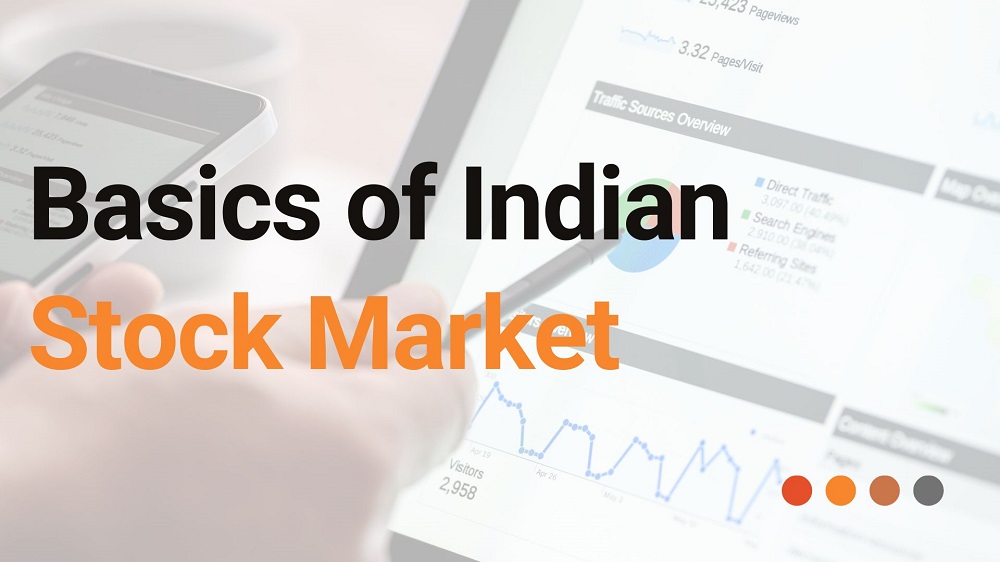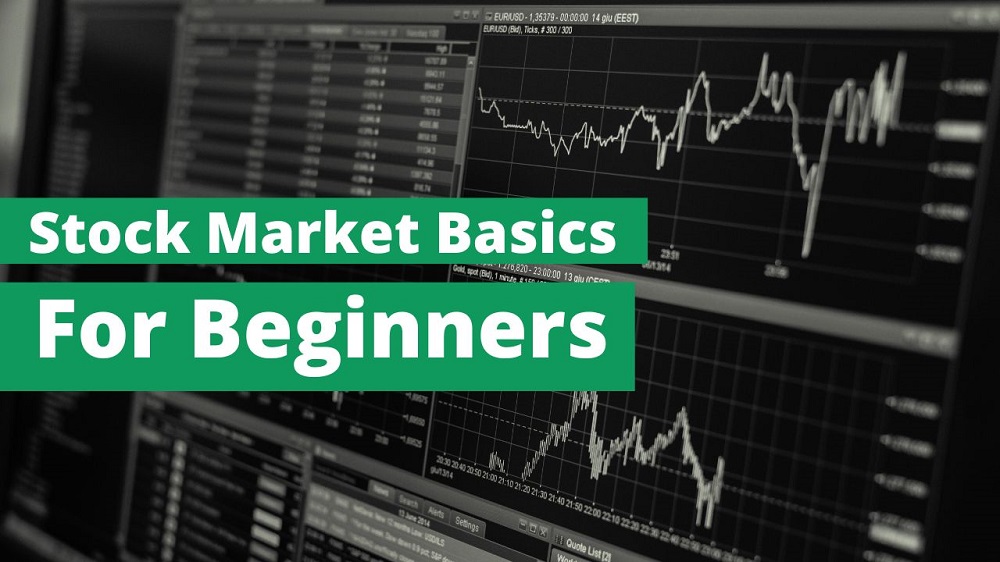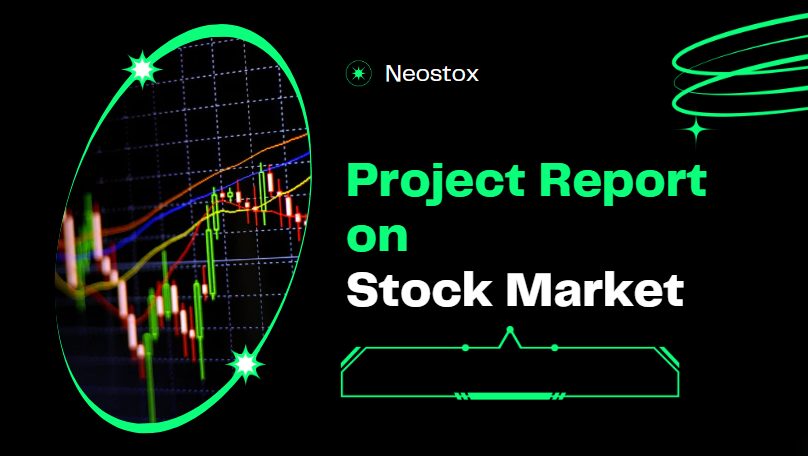Online trading has completely changed the way people invest and handle their finances. With just a few clicks, you can buy and sell stocks, bonds, and other financial assets from the comfort of your own home. Online trading platforms offer a wide variety of options and tools that can help you make informed decisions. If you are new to this world, don’t worry. This guide will walk you through everything you need to know to get started with online trading.
What is Online Trading?
Online trading involves buying and selling financial securities through the internet. This includes stocks, bonds, ETFs (Exchange-Traded Funds), options, and more. Unlike traditional trading, which often requires you to place orders via phone calls or face-to-face with a broker, online trading platforms allow you to execute trades in real-time using a computer or mobile device.
Benefits of Online Trading
Accessibility and Convenience
One of the most significant advantages of online trading is accessibility. You can trade from anywhere in the world as long as you have an internet connection. This convenience allows you to take control of your investments without the need to rely on a broker’s availability. Whether you are at home, at work, or even on vacation, you can access your trading account and make trades at any time.
Lower Costs
Online trading platforms typically charge lower fees compared to traditional brokerage firms. This reduction in cost makes it more affordable for individual investors to trade and manage their portfolios. Additionally, many platforms offer zero-commission trades for certain securities, which means you can buy and sell stocks without paying any commission fees. This can save you a lot of money over time, especially if you trade frequently.
Real-Time Information and Tools
Online trading platforms provide real-time market data and analytical tools that help you make informed decisions. You can track price movements, view charts, and access research reports, all of which can enhance your trading strategy. These tools allow you to analyze the market and make decisions based on up-to-date information.
Control and Flexibility
With online trading, you have complete control over your investment decisions. You can quickly execute trades, set stop-loss orders, and manage your portfolio without having to wait for a broker to take action on your behalf. This level of control and flexibility is especially important for active traders who need to respond quickly to market changes.
Risks of Online Trading
While online trading offers numerous benefits, it is essential to understand the risks involved.
Market Volatility
The financial markets can be highly volatile, with prices fluctuating rapidly due to various factors such as economic data, geopolitical events, and market sentiment. This volatility can lead to significant gains or losses in a short period. It is important to be aware of the risks and to have a strategy in place to manage them.
Emotional Decision-Making
The convenience of online trading can sometimes lead to impulsive decisions. It’s crucial to remain disciplined and stick to your trading plan rather than reacting emotionally to market movements. Emotional decision-making can lead to losses, so it’s important to stay calm and make decisions based on your trading strategy.
Technical Issues
Online trading platforms rely on technology, and technical issues such as server outages, slow internet connections, or platform glitches can impact your ability to trade effectively. It is important to have a backup plan in case you encounter technical issues while trading.
Lack of Knowledge
Without a solid understanding of how the markets work and how to analyze securities, you may find it challenging to make profitable trades. Education and continuous learning are vital to becoming a successful online trader. Taking the time to learn about the markets and trading strategies can help you make better decisions and improve your chances of success.

Steps to Start Online Trading
1. Educate Yourself
Before diving into online trading, take the time to educate yourself about the basics of investing and trading. Numerous resources, including books, online courses, and webinars, can provide valuable insights. Some essential topics to cover include:
- Understanding different types of securities (stocks, bonds, ETFs, etc.)
- Fundamental and technical analysis
- Risk management strategies
- The importance of diversification
2. Choose a Reliable Online Trading Platform
Selecting the right online trading platform is crucial for a successful trading experience. Consider the following factors when choosing a platform:
- User-Friendly Interface: Ensure the platform is easy to navigate and use.
- Fees and Commissions: Compare the costs associated with trading, including commissions, spreads, and account maintenance fees.
- Research Tools: Look for platforms that offer robust research tools, charts, and real-time data.
- Customer Support: Reliable customer support is essential, especially for beginners who may need assistance.
Neostox is the best online trading platform!
3. Open a Trading Account
Once you have chosen a platform, the next step is to open a trading account. This process typically involves:
- Providing Personal Information: You will need to provide your name, address, Social Security number, and other identification details.
- Funding Your Account: Deposit funds into your trading account using a bank transfer, credit card, or other accepted payment methods.
- Verification: Some platforms may require you to verify your identity by submitting documents such as a driver’s license or passport.
4. Start with a Demo Account
Many online trading platforms offer demo accounts that allow you to practice trading with virtual money. Using a demo account is an excellent way to familiarize yourself with the platform and test your trading strategies without risking real money. This can help you build confidence and gain experience before you start trading with real money.
5. Develop a Trading Plan
A well-defined trading plan is essential for success. Your plan should outline your investment goals, risk tolerance, and the strategies you will use to achieve these goals. Key components of a trading plan include:
- Asset Allocation: Decide how you will allocate your funds across different asset classes.
- Entry and Exit Criteria: Define the conditions under which you will enter and exit trades.
- Risk Management: Determine how much capital you are willing to risk on each trade and set stop-loss orders to limit potential losses.
6. Start Trading
With your education, trading platform, and plan in place, you are ready to start trading. Begin with small trades to gain experience and build confidence. Monitor your trades closely and keep a trading journal to record your decisions and the outcomes. This practice can help you identify patterns and improve your strategies over time.
Understanding Different Types of Trades
Market Orders
A market order is an instruction to buy or sell a security immediately at the current market price. Market orders are executed quickly, but the exact price may vary depending on market conditions. This type of order is useful when you want to buy or sell a security quickly.
Limit Orders
A limit order specifies the maximum price you are willing to pay for a buy order or the minimum price you will accept for a sell order. Limit orders provide more control over the execution price but may not be filled if the market price does not reach your specified level. This type of order is useful when you want to control the price at which you buy or sell a security.
Stop Orders
A stop order, also known as a stop-loss order, is an order to buy or sell a security once its price reaches a specific level. Stop orders are used to limit potential losses or lock in profits. There are two main types of stop orders:
- Stop-Loss Order: Becomes a market order once the stop price is reached.
- Stop-Limit Order: Becomes a limit order once the stop price is reached.
Trailing Stop Orders
A trailing stop order is a type of stop order that adjusts the stop price at a fixed percentage or dollar amount below (for a sell order) or above (for a buy order) the market price. Trailing stops help protect profits while allowing for potential gains as the market moves in your favor. This type of order is useful for managing risk while still allowing for potential profits.
Analyzing the Market
Fundamental Analysis
Fundamental analysis involves evaluating a company’s financial health and performance to determine its intrinsic value. Key components of fundamental analysis include:
- Financial Statements: Analyze the company’s income statement, balance sheet, and cash flow statement.
- Earnings Reports: Review quarterly and annual earnings reports to assess profitability.
- Economic Indicators: Consider broader economic factors such as interest rates, inflation, and employment data.
Technical Analysis
Technical analysis focuses on historical price movements and trading volume to forecast future price trends. Common tools and techniques used in technical analysis include:
- Charts: Use line charts, bar charts, and candlestick charts to visualize price movements.
- Indicators: Apply indicators such as moving averages, Relative Strength Index (RSI), and Bollinger Bands to identify trends and potential entry/exit points.
- Patterns: Recognize chart patterns like head and shoulders, double tops and bottoms, and triangles to predict price movements.
Risk Management in Online Trading
Diversification
Diversification involves spreading your investments across various asset classes and sectors to reduce risk. By diversifying your portfolio, you can mitigate the impact of poor performance in a single investment. This means that if one investment performs poorly, others may perform well, balancing your overall risk.
Position Sizing
Position sizing refers to determining the appropriate amount of capital to allocate to each trade. This practice helps manage risk by ensuring that no single trade can significantly impact your overall portfolio. By controlling the size of each position, you can limit your potential losses.
Stop-Loss Orders
As mentioned earlier, stop-loss orders are critical tools for managing risk. By setting stop-loss orders, you can limit potential losses on individual trades. This means that if the price of a security moves against you, your stop-loss order will automatically sell the security, limiting your losses.
Regular Portfolio Review
Regularly reviewing your portfolio helps ensure that it remains aligned with your investment goals and risk tolerance. Adjust your positions as needed based on market conditions and changes in your financial situation. This can help you stay on track and make necessary adjustments to your strategy.
Psychological Aspects of Trading
Emotional Discipline
Maintaining emotional discipline is crucial in online trading. Fear and greed are common emotions that can lead to poor decision-making. Stick to your trading plan and avoid making impulsive decisions based on market fluctuations. Emotional discipline can help you stay focused and make rational decisions.
Patience and Perseverance
Successful trading requires patience and perseverance. Not every trade will be profitable, and it’s essential to learn from your mistakes. Continuously refine your strategies and remain committed to your long-term goals. Patience and perseverance can help you navigate the ups and downs of the market.
Continuous Learning
The financial markets are constantly evolving, and staying informed is vital. Keep learning through books, courses, webinars, and by following market news. Join online trading communities and forums to share experiences and gain insights from other traders. Continuous learning can help you stay up-to-date with market trends and improve your trading skills.
Conclusion
Getting started with online trading can be a rewarding journey if approached with the right mindset and preparation. Educate yourself, choose a reliable trading platform, develop a solid trading plan, and practice disciplined risk management. By doing so, you can navigate the complexities of the financial markets and work towards achieving your investment goals. Remember, continuous learning and patience are key to becoming a successful online trader.
Also Read
- Basics of Indian Stock MarketThe Indian stock market is a dynamic and intriguing financial arena that offers vast opportunities for investors. Understanding the Basics of Indian Stock Market is essential for anyone looking to invest or learn more about the financial markets in India.
- Stock Market Basics for BeginnersInvesting in the stock market can be a fantastic way to grow your wealth over time. However, for beginners, it can seem complex and intimidating. Understanding the basics of the stock market is essential before you start investing. This guide
- Project Report on Stock MarketThe stock market is an important part of the economy, allowing people and companies to buy and sell shares, bonds, and other securities. A detailed project report on stock market helps to understand how it works, its importance, structure, types,
- CE Meaning in Stock MarketUnderstanding the various terminologies used in the stock market is crucial for both novice and experienced investors. One such term that often comes up is “CE.” In this blog post, we will explore the CE Meaning in Stock Market in
- Stock Market Operations: A Comprehensive GuideThe stock market is a complex yet fascinating domain that significantly impacts the global economy. Understanding stock market operations is essential for anyone looking to invest or comprehend how financial markets work. This guide will delve into various aspects of
Frequently Asked Questions
What is online trading?
Online trading is buying and selling financial securities via the internet. It includes stocks, bonds, ETFs, options, and more. Using a computer or mobile device, you can trade in real-time on various online platforms. These platforms provide tools and data to help you make informed decisions, and they often have lower fees than traditional brokerage firms.
How do I start with online trading?
To start online trading, educate yourself about investing basics, choose a reliable trading platform, open a trading account, and fund it. Use a demo account to practice trading strategies without risking real money. Develop a trading plan outlining your goals, risk tolerance, and strategies. Begin with small trades to gain experience and build confidence.
What are the risks of online trading?
Online trading involves risks such as market volatility, emotional decision-making, technical issues, and lack of knowledge. Prices can fluctuate rapidly, leading to gains or losses. It’s important to stay disciplined, manage risks, and continuously educate yourself to make informed decisions.
What is a market order?
A market order is an instruction to buy or sell a security immediately at the current market price. It ensures quick execution, but the exact price may vary depending on market conditions. Market orders are useful when you want to trade quickly and are less concerned about the specific price.
What is a limit order?
A limit order specifies the maximum price you’re willing to pay for a buy order or the minimum price you’ll accept for a sell order. It gives you control over the execution price, but the order may not be filled if the market price doesn’t reach your specified level.
How can I manage risk in online trading?
Manage risk by diversifying your investments, setting stop-loss orders, and controlling the size of each trade. Regularly review your portfolio to ensure it aligns with your goals and risk tolerance. Stick to your trading plan and avoid making impulsive decisions based on market fluctuations.
What is a stop-loss order?
A stop-loss order is an order to buy or sell a security once its price reaches a specific level. It helps limit potential losses by automatically executing the trade when the stop price is reached. This tool is essential for managing risk in online trading.
What tools are available on online trading platforms?
Online trading platforms offer various tools, including real-time market data, charts, analytical tools, and research reports. These tools help you make informed decisions, track price movements, and analyze market trends. They are crucial for developing and executing your trading strategies.
How important is education in online trading?
Education is crucial for successful online trading. Understanding market basics, different types of securities, and trading strategies can help you make informed decisions. Continuously learning through books, courses, webinars, and market news is essential to stay updated and improve your trading skills.
Can I trade with a small amount of money?
Yes, you can start trading with a small amount of money. Many online trading platforms have low minimum deposit requirements. Start with small trades to gain experience and gradually increase your investments as you become more confident and knowledgeable about the market.




